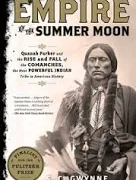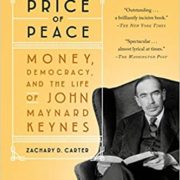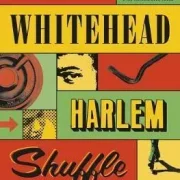Powers and Thrones: A New History of the Middle Ages by Dan Jones
Pity the Middle Ages, so often derided as the dreary placeholder between the classical and modern eras. Or, worse, it’s a catchall for all things retrograde. Want to insult some people? Tell them that their ideas are from the Middle Ages or that their actions are medieval.
Dan Jones, author of Powers and Thrones: A New History of the Middle Ages, argues this thousand-year period of history deserves more respect. Not only does he indeed make the case, he does so by taking us through a full millennium in just under 600 pages. Such an endeavor could have been a slog to read, but he managed to produce the exact opposite, organizing a potentially unwieldy topic into sections that are both informative and enjoyable. In fact, Jones’ enthusiasm for this period of history, coupled with his strong narration, reignites the Middle Ages and shows how it’s foundational to understanding the modern world.
The Middle Ages had to follow a show-stealing act, of course: the mighty Roman Empire, with its many accomplishments. But Romanization came after the Legions marched through a land and subjugated any given population. Quoting Virgil, Jones notes that one such task of a conquering Roman was to “battle down the proud.” So when we read of the barbarians on the move toward the end of Roman rule, we know that the Roman world had its many cruelties as well.
As an example of waning Roman power in the fifth century, Jones tells of the plight of a far-flung Roman territory: Britain. Invading Saxons prompted native chieftains to write a pleading letter to a Roman general. “The barbarians drive us to the sea, the sea drives us to the barbarians. Between these two modes of death we are either killed or drowned.” How was the letter received? It was labeled the “Groan of the Britons.” The Brits were on their own.
Huns stampeded westward, possibly—as tree ring data suggests—to escape a “megadrought.” Their movement and eventual demise prompted other tribes to wander and conquer. There’s a lot to take in, and only occasionally do you come across an arid sentence such as, “Meanwhile, across the Alps a barbarian group known as the Lombards…” The fact that a lackluster sentence stands out is meant as a compliment, for, again, it demonstrates that most of Jones’ narrative has some verve.
Jones smartly forms his chapters so that they can be optioned into standalone readings. You can jump past, say, the chapter on Byzantium and delve into the reading on the Arabs. And each chapter helps clarify the historical significance. Take the Arabs. The modern political map of the Middle East is illuminated by briefly reading its Middle Age history. Plus, during a time when post-Roman rule was being sorted out, the Arabs did their part by establishing houses of learning: libraries.
When Charlemagne, king of the Franks and the first Holy Roman Emperor, died in the ninth century, he had unified most of central and western Europe. It didn’t last. But, as Jones points out, unification became the persistent dream of many, including Napoleon Bonaparte, “another irresistible warrior and accumulator.”
I’m sure some of you are thinking, “I already knew that.” And no doubt many of you already know that Vikings founded the Kievan Rus on territory that now includes parts of Russia and Ukraine. The Mongol invasions of the 13th century shifted some power from Kiev to Moscow, a power dynamic that we all know is very much alive today.
Regardless of your historical familiarity, Jones does capital work in establishing a continuity that moves the history along. You have monks, plagues, crusaders, the rise of the merchant class, and the establishment of universities. On land, we have gothic architecture. On the sea, we have navigators in the process of opening up the world.
And, of course, we have knights. If you were to ask someone to word-associate the Middle Ages, “knights” would probably be a frequent choice. They, and their order of chivalry, live on in our imagination. Even today, receiving a knighthood in the United Kingdom is considered a great honor. Jones mentions that this imaginative spark was in the Middle-Ages mind as well, as evidenced “with a heroic new literature that painted knights as lovers and questers whose ethical code perfumed the dubious reality of the deeds.” There’s “The Song of Roland” from 1098. In the late 14th century, Chaucer gave the first tale in “The Canterbury Tales” to the knight. Arthurian legend even found its way to Richard the Lionheart, for on his way to the Third Crusade he claimed to brandish Arthur’s Excalibur.
With the Renaissance and the Reformation, we see both the rise of humanism and the power of individual action. Jones contends that quite a few of the names we associate with the Renaissance (Leonardo da Vinci, for one) were products of the Middle Ages. Nonetheless, the medieval period was coming to an end.
Primarily this is a book of political history. A cultural reading into the lives of everyday individuals is not within its scope. (He does tell us that the average human existence “hovered somewhere just above terrible.”) But this does not mean the discussed individuals are presented as mere soulless entities in a thousand-year political disquisition.
Jones, for example, shares the ending of Gelimer, a vanquished sixth-century Vandal king. He and a couple thousand other Vandal prisoners were marched into Constantinople’s Hippodrome. A full crowd was in attendance as he was made to surrender his royal robes and to lie prone at the feet of Emperor Justinian. The Byzantine emperor was in his lofty perch, and Gelimer was no longer a royal ruler over anyone or anything. The fleeting nature of prestige and political power was apparently at the forefront of Gelimer’s mind, for he calmly, and repeatedly, quoted from Ecclesiastes: “Vanity of vanities, all is vanity.”











